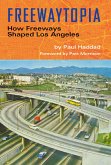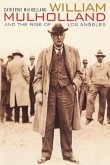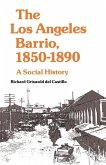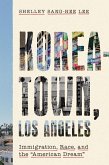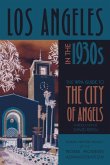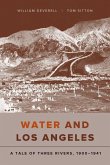"[An] enthralling debut...a beguiling history of Southern California, early industrial development, and U.S. empire." Publishers Weekly (starred review)
A deeply researched narrative of the creation of the Port of Los Angeles, a central event in America's territorial expansion and rise as a global economic power.
The Port of Los Angeles is all around us. Objects we use on a daily basis pass through it: furniture, apparel, electronics, automobiles, and much more. The busiest container port in the Western hemisphere, it claims one-sixth of all US ocean shipping. Yet despite its centrality to our world, the port and the story of its making have been neglected in histories of the United States. In A Machine to Move Ocean and Earth, historian James Tejani corrects that significant omission, charting the port's rise out of the mud and salt marsh of San Pedro estuaryand showing how the story of the port is the story of modern, globalized America itself.
By the mid-nineteenth century, Americans had identified the West Coast as the republic's destiny, a gateway to the riches of the Pacific. In a narrative spanning decades and stretching to Washington, DC, the Pacific Northwest, Civil War Richmond, Southwest deserts, and even overseas to Europe, Hawaii, and Asia, Tejani demonstrates how San Pedro came to be seen as all-important to the nation's future. It was not virgin land, but dominated by powerful Mexican estates that would not be dislodged easily. Yet American scientists, including the great surveyor George Davidson, imperialist politicians such as Jefferson Davis and William Gwin, and hopeful land speculators, among them the future Union Army general Edward Ord, would wrest control of the estuary, and set the scene for the violence, inequality, and engineering marvels to come.
San Pedro was no place for a harbor, Tejani reveals. The port was carved in defiance of nature, using new engineering techniques and massive mechanical dredgers. Business titans such as Collis Huntington and Edward H. Harriman brought their money and corporate influence to the task. But they were outmatched by government reformers, laying the foundations for the port, for the modern city of Los Angeles, and for our globalized world. Interweaving the natural history of San Pedro into this all-too-human history, Tejani vividly describes how a wild coast was made into the engine of American power. A story of imperial dreams and personal ambition, A Machine to Move Ocean and Earth is necessary reading for anyone who seeks to understand what the United States was, what it is now, and what it will be.
A deeply researched narrative of the creation of the Port of Los Angeles, a central event in America's territorial expansion and rise as a global economic power.
The Port of Los Angeles is all around us. Objects we use on a daily basis pass through it: furniture, apparel, electronics, automobiles, and much more. The busiest container port in the Western hemisphere, it claims one-sixth of all US ocean shipping. Yet despite its centrality to our world, the port and the story of its making have been neglected in histories of the United States. In A Machine to Move Ocean and Earth, historian James Tejani corrects that significant omission, charting the port's rise out of the mud and salt marsh of San Pedro estuaryand showing how the story of the port is the story of modern, globalized America itself.
By the mid-nineteenth century, Americans had identified the West Coast as the republic's destiny, a gateway to the riches of the Pacific. In a narrative spanning decades and stretching to Washington, DC, the Pacific Northwest, Civil War Richmond, Southwest deserts, and even overseas to Europe, Hawaii, and Asia, Tejani demonstrates how San Pedro came to be seen as all-important to the nation's future. It was not virgin land, but dominated by powerful Mexican estates that would not be dislodged easily. Yet American scientists, including the great surveyor George Davidson, imperialist politicians such as Jefferson Davis and William Gwin, and hopeful land speculators, among them the future Union Army general Edward Ord, would wrest control of the estuary, and set the scene for the violence, inequality, and engineering marvels to come.
San Pedro was no place for a harbor, Tejani reveals. The port was carved in defiance of nature, using new engineering techniques and massive mechanical dredgers. Business titans such as Collis Huntington and Edward H. Harriman brought their money and corporate influence to the task. But they were outmatched by government reformers, laying the foundations for the port, for the modern city of Los Angeles, and for our globalized world. Interweaving the natural history of San Pedro into this all-too-human history, Tejani vividly describes how a wild coast was made into the engine of American power. A story of imperial dreams and personal ambition, A Machine to Move Ocean and Earth is necessary reading for anyone who seeks to understand what the United States was, what it is now, and what it will be.
Dieser Download kann aus rechtlichen Gründen nur mit Rechnungsadresse in A, D ausgeliefert werden.




